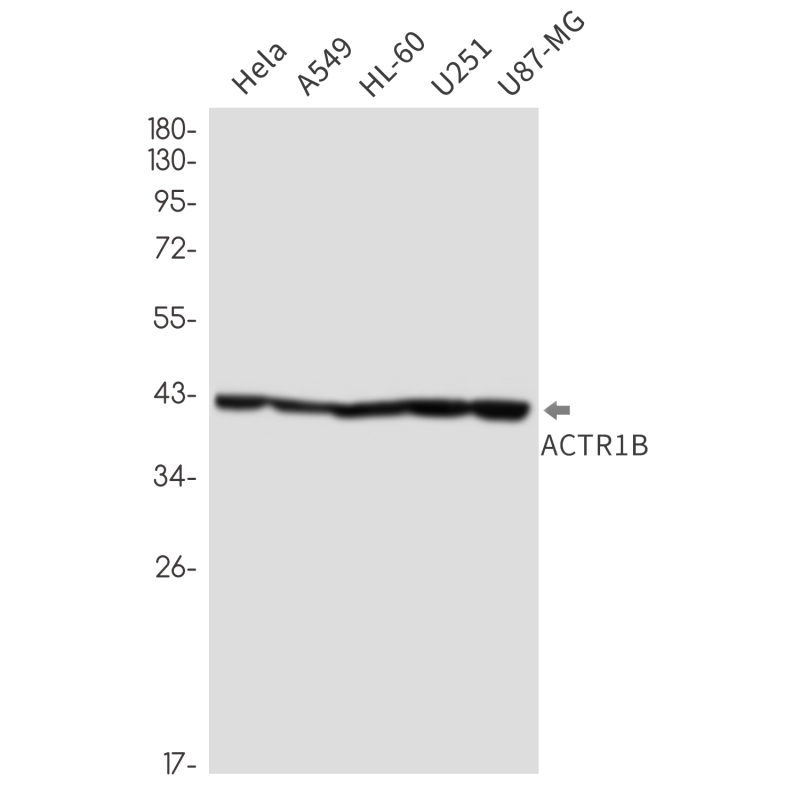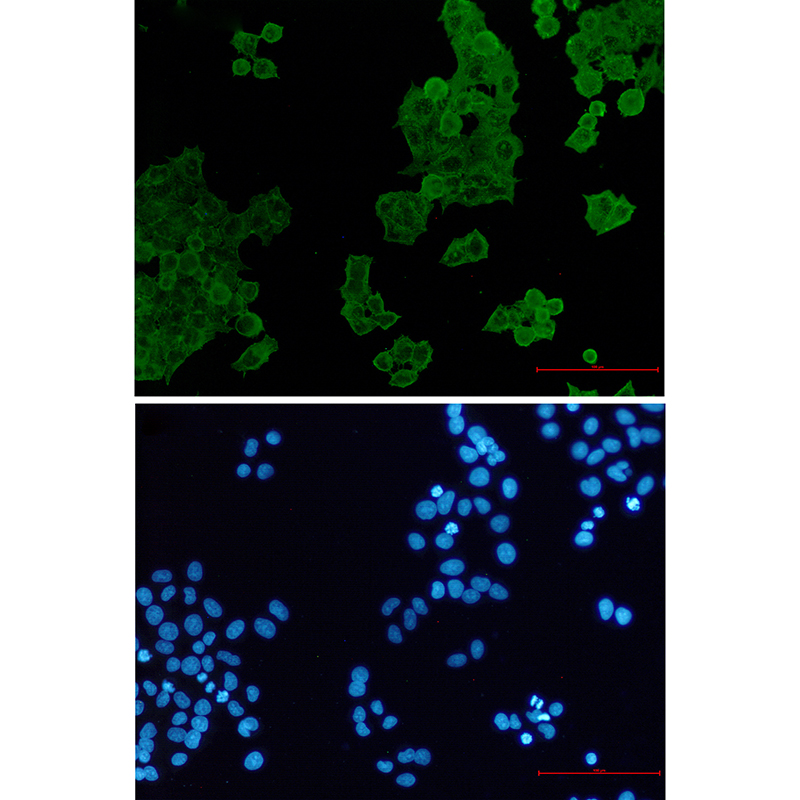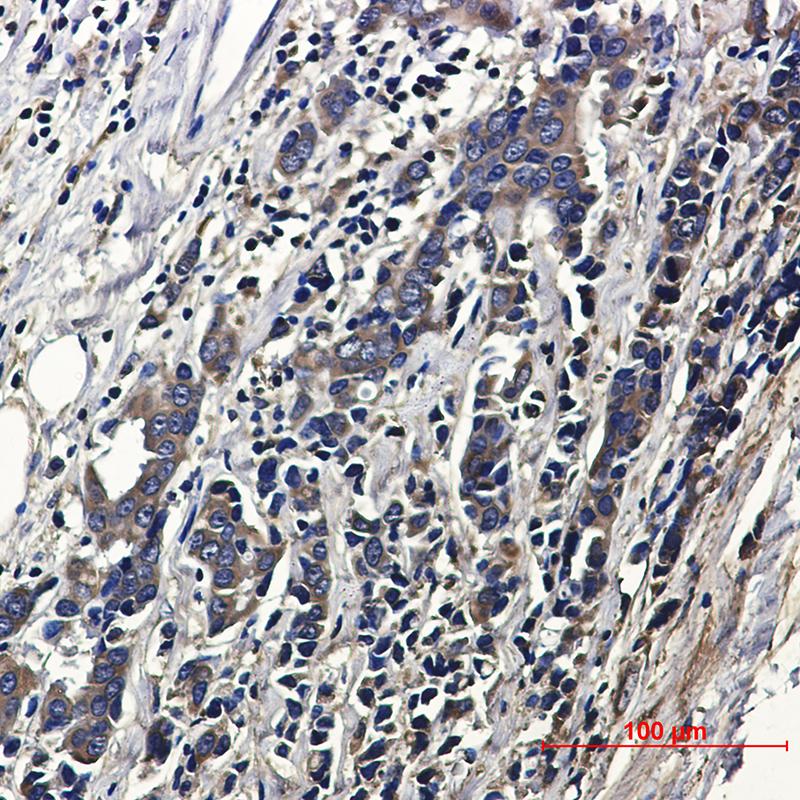


| WB | 1/500-1/1000 | Human,Mouse,Rat |
| IF | 1/20 | Human,Mouse,Rat |
| IHC | 1/50-1/100 | Human,Mouse,Rat |
| ICC | 1/50-1/200 | Human,Mouse,Rat |
| FCM | 咨询技术 | Human,Mouse,Rat |
| Elisa | 咨询技术 | Human,Mouse,Rat |
| Aliases | PC3; ARP1B; CTRN2 |
| Entrez GeneID | 10120 |
| WB Predicted band size | Calculated MW: 42 kDa; Observed MW: 42 kDa |
| Host/Isotype | Rabbit IgG |
| Antibody Type | Primary antibody |
| Storage | Store at 4°C short term. Aliquot and store at -20°C long term. Avoid freeze/thaw cycles. |
| Species Reactivity | Human |
| Immunogen | A synthetic peptide of human ACTR1B |
| Formulation | Purified antibody in TBS with 0.05% sodium azide,0.05%BSA and 50% glycerol. |
+ +
以下是关于ACTR1B抗体的3篇示例文献(内容为模拟概括,仅供参考):
1. **文献名称**:*"ACTR1B in Centrosome Function: Antibody Development and Localization Studies"*
**作者**:Chen L, et al.
**摘要**:研究团队开发了一种针对ACTR1B的多克隆抗体,通过免疫荧光和Western blot验证其特异性,揭示了ACTR1B在中心体组装和有丝分裂中的关键作用。
2. **文献名称**:*"Proteomic Analysis of Actin-Related Protein Complexes Using ACTR1B-Specific Antibodies"*
**作者**:Müller S, et al.
**摘要**:利用ACTR1B抗体进行免疫共沉淀实验,鉴定了其与肌动蛋白相关蛋白复合物的相互作用,提示ACTR1B在细胞骨架重塑和胞内运输中的功能。
3. **文献名称**:*"ACTR1B Antibody Reveals Dysregulation in Neurodevelopmental Disorders"*
**作者**:Garcia-Rojas A, et al.
**摘要**:通过ACTR1B抗体分析患者脑组织样本,发现ACTR1B表达异常与神经元迁移缺陷相关,为神经发育疾病机制提供新见解。
如需真实文献,建议通过PubMed或Google Scholar检索关键词“ACTR1B antibody”或“ARP1B antibody”。
The ACTR1B (ARP1 beta) antibody is a key tool for studying the actin-related protein 1B, a component of the dynactin complex, which plays a critical role in intracellular transport and cytoskeletal organization. ACTR1B, part of the actin-related protein (Arp) family, shares structural homology with actin but lacks filament-forming ability. It primarily associates with dynactin to facilitate dynein-mediated retrograde transport of vesicles, organelles, and macromolecules along microtubules. This protein is essential for maintaining cell polarity, mitotic spindle orientation, and neuronal axonogenesis.
ACTR1B antibodies are widely used in techniques like Western blotting, immunofluorescence, and immunoprecipitation to detect protein expression, localization, and interactions in various cell types or tissues. Researchers employ these antibodies to investigate roles in diseases linked to cytoskeletal dysfunction, such as neurodegenerative disorders (e.g., ALS, Huntington’s) or cancer metastasis. Many commercially available ACTR1B antibodies are raised in hosts like rabbits or mice, often validated for specificity using knockout controls or siRNA knockdown. Optimal performance may require tissue-specific optimization due to variable expression levels. Understanding ACTR1B dynamics aids in deciphering mechanisms of intracellular trafficking and developmental processes, making its antibody a vital reagent in cell biology research.
×